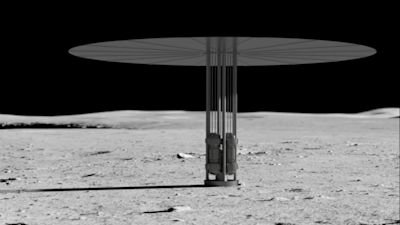Washington (TDI): NASA, the United States space agency, will accelerate its proposal to build a nuclear reactor on the Moon by 2030, according to reports by United States media.
The project is part of measures to establish a permanent human presence on the Moon’s surface, with officials mentioning rising competition from countries like China and Russia. Acting NASA
Administrator and U.S. Transport Secretary Sean Duffy, who was appointed on an interim basis by former President Donald Trump, explained in a letter that the space agency needs to move quickly to build high-power energy production facilities to enable a potential lunar economy, Mars’ power systems, and enhance US national security in space.
Duffy invited business firms to submit a proposal for the construction of a reactor that will be able to produce a minimum of 100 kilowatts of power.
While this is quite low compared to the level of a typical on-shore wind turbine of 2 to 3 megawatts, the reactor is a crucial step towards guaranteeing steady power in the harsh environment of the Moon.
Read More: Pakistan to Launch Moon Mission with China’s Support by 2035
The idea of lunar nuclear energy is not new. In 2022, NASA signed three, $5 million contracts with three separate companies to help design reactor demonstrators. China and Russia, on the other hand, have collectively stated that they intend to build an automated nuclear power plant on the Moon by 2035.
Nuclear energy is likely to be the only viable source of long-term power on the Moon, where a lunar day is about four weeks of Earth time, two weeks of day, and two weeks of night, making solar power questionable.
Senior University of Surrey lecturer Dr. Sungwoo Lim claimed nuclear power is “inevitable” for long-term lunar travel. Professor Lionel Wilson of Lancaster University suggested that the deployment of a reactor is technically possible by 2030, given the commitment of enough money. But it is not without danger.
The Open University’s Dr. Simeon Barber highlighted the safety hazards of putting radioactive material into space and identified the drawbacks of piecemeal planning. If you’ve got nuclear power for a base, but no way of getting people and kit there, then it’s not much use, he said.
NASA’s plans to return humans to the Moon in 2027 under the Artemis program have been hit with a series of setbacks, such as the planned 24% budget reduction in 2026.
A passionate International Relations student with a strong interest in diplomacy, policy, and global affairs. Dedicated to contributing thoughtful analysis and research on international issues.




